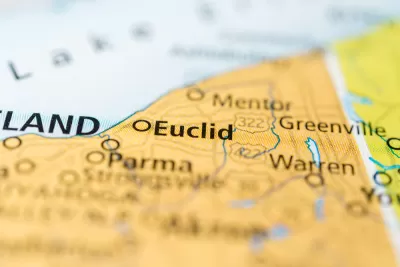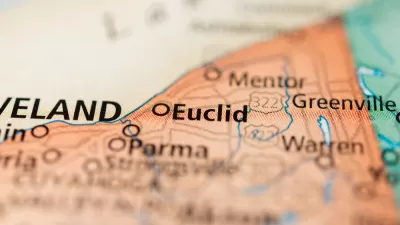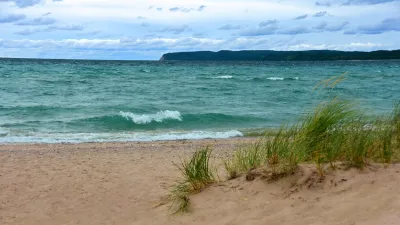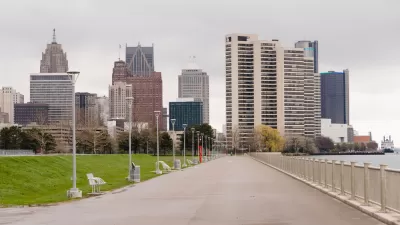Clear communication and a fair trade let Euclid, Ohio begin to rethink its lakefront—and its future.

Euclid, Ohio is not the first town built by Industrial Age magnates that undervalued a lake used more often for dumping trash than for recreation. And it is not the first town to reimagine that waterfront as an asset for current residents and a draw for new ones.
But like much of the waterfront on the Great Lakes, the properties that line the shore in Euclid are privately owned, and it might be the first town to figure out how to acquire that land without spending huge amounts of money, or seizing it through eminent domain.
Instead, Daniel J. McGraw explains in a long piece at NextCity, Euclid made a trade.
"In short, Euclid got 100-odd homeowners to voluntarily give the city their private lakefront properties so the public could ride their bikes and spread out their picnics there. Instead of monetary compensation, the property owners will receive in return what they’re betting is even more valuable: a new piece of infrastructure that will stabilize the bluff that their houses sit on above the lake, and a public park near their properties — something that might have once been seen as a drawback. The public, in turn, will finally get access to a prime swathe of their city’s waterfront."
Like many areas of Cleveland, Euclid was decimated by foreclosure during the Great Recession, but even before that the town was working to attract more residents after many of them left for outer-ring suburbs in the last few decades of the 20th century.
Euclid is about to get a massive Amazon distribution center in an old mall that may connect to the new park, and the new waterfront trail is part of a master greenway plan for greater Cleveland. So whether or not a "short waterfront trail" can "really contribute significantly to the city of Euclid’s rebound" is still an open question, but, McGraw writes, "It's not impossible."
FULL STORY: Did a Hundred Homeowners Just Change the Great Lakes Forever?

Study: Maui’s Plan to Convert Vacation Rentals to Long-Term Housing Could Cause Nearly $1 Billion Economic Loss
The plan would reduce visitor accommodation by 25,% resulting in 1,900 jobs lost.

North Texas Transit Leaders Tout Benefits of TOD for Growing Region
At a summit focused on transit-oriented development, policymakers discussed how North Texas’ expanded light rail system can serve as a tool for economic growth.

Why Should We Subsidize Public Transportation?
Many public transit agencies face financial stress due to rising costs, declining fare revenue, and declining subsidies. Transit advocates must provide a strong business case for increasing public transit funding.

How to Make US Trains Faster
Changes to boarding platforms and a switch to electric trains could improve U.S. passenger rail service without the added cost of high-speed rail.

Columbia’s Revitalized ‘Loop’ Is a Hub for Local Entrepreneurs
A focus on small businesses is helping a commercial corridor in Columbia, Missouri thrive.

Invasive Insect Threatens Minnesota’s Ash Forests
The Emerald Ash Borer is a rapidly spreading invasive pest threatening Minnesota’s ash trees, and homeowners are encouraged to plant diverse replacement species, avoid moving ash firewood, and monitor for signs of infestation.
Urban Design for Planners 1: Software Tools
This six-course series explores essential urban design concepts using open source software and equips planners with the tools they need to participate fully in the urban design process.
Planning for Universal Design
Learn the tools for implementing Universal Design in planning regulations.
City of Santa Clarita
Ascent Environmental
Institute for Housing and Urban Development Studies (IHS)
City of Grandview
Harvard GSD Executive Education
Toledo-Lucas County Plan Commissions
Salt Lake City
NYU Wagner Graduate School of Public Service





























